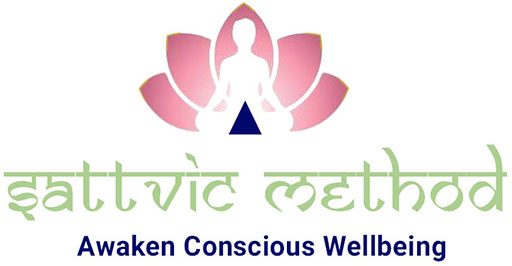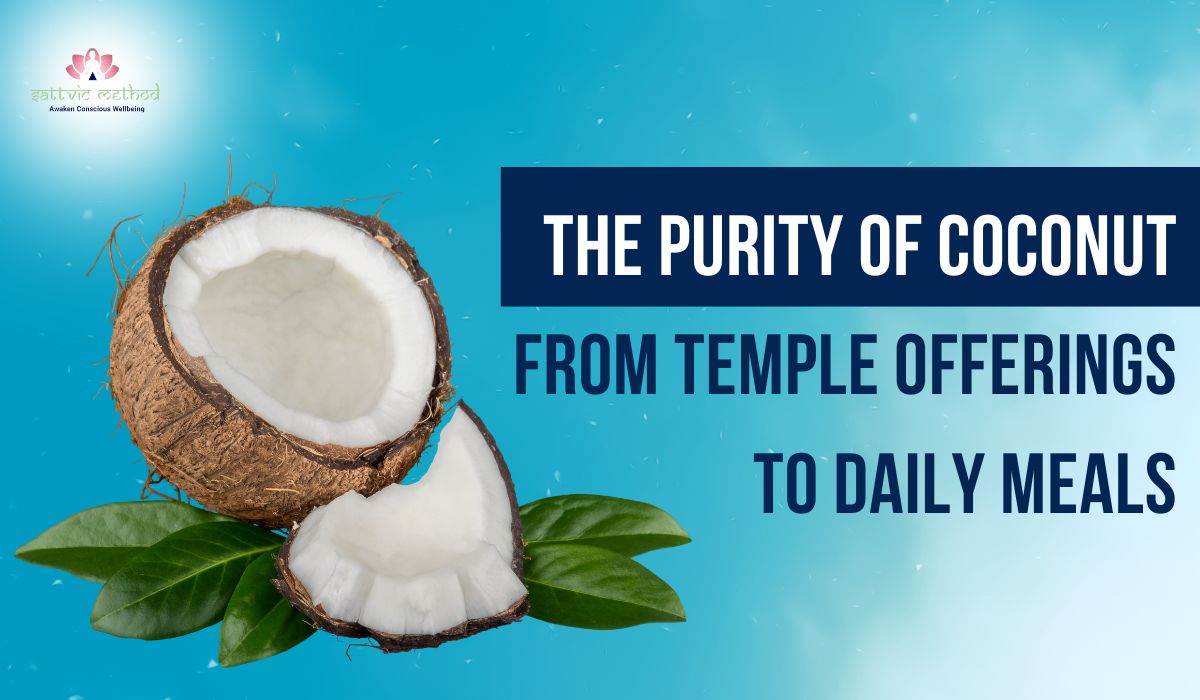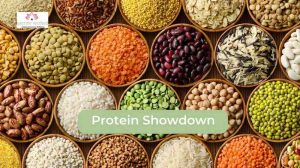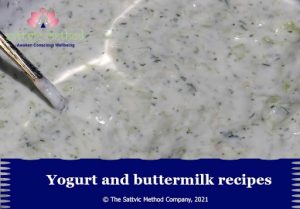The Purity of Coconut: From Temple Offerings to Daily Meals
In the world of sattvic living, where purity, balance, and harmony reign supreme, few foods hold as much symbolic and practical importance as the humble coconut. Often seen gracing altars, cracked in sacred ceremonies, or gently simmered into everyday meals, the coconut is more than just a tropical fruit — it is a vessel of divine nourishment, spiritual meaning, and holistic health.
Coconut in Spiritual Traditions: A Sacred Symbol
In Hindu rituals, the coconut is offered during pujas, homas, and temple ceremonies, symbolizing the offering of one’s ego to the divine. Its rough outer shell represents the hard exterior of the human personality — pride, selfishness, and ignorance — while the pure white kernel inside symbolizes the inner self, untouched and pristine.
Breaking a coconut is not just a ritual act. It signifies surrender. By placing the coconut before the divine and cracking it open, the devotee symbolically breaks the ego, making space for humility, devotion, and truth to emerge.
This spiritual symbolism has transcended centuries and continues to be part of modern-day rituals — from housewarmings to weddings to temple worship — reminding us that food, when prepared and offered consciously, becomes a spiritual experience.
Coconut in the Sattvic Diet
According to Ayurveda and yogic nutrition, sattvic foods are those that promote clarity, peace, and vitality. Fresh fruits, whole grains, vegetables, nuts, and dairy products are staples of this diet. Coconut — in all its forms — fits beautifully into this lifestyle.
Why is coconut considered sattvic?
Because it is:
- Cooling and calming to the system
- Non-irritating, gentle on digestion
- Rich in prana (life force) when fresh and untreated
- Versatile, used in everything from cooking to skincare
In sattvic kitchens, coconut is more than an ingredient; it is a companion on the journey to inner balance and health.
Coconut in Daily Meals: Nourishment from Nature
In Indian households, particularly in the South, coconut is a staple — grated into vegetables, blended into chutneys, stirred into stews, or simply eaten fresh. Its rich texture and cooling quality make it an ideal complement to the spices and warmth of other ingredients.
Some sattvic-friendly ways to use coconut daily include:
- Fresh coconut chutney with curry leaves and ginger
- Coconut rice made with ghee, curry leaves, and mustard seeds
- Tender coconut water as a natural electrolyte drink
- Coconut ladoos sweetened with jaggery and cardamom
- Vegetable stews with coconut milk for a calming, grounding meal
Not only do these dishes offer taste and comfort, but they also contribute to a sense of calm and clarity — the very essence of sattva.
Coconut & Energy Centers: The Chakra Connection
In spiritual practice, the human body is seen as a field of energy. Coconut is often associated with the Sahasrara Chakra, the crown chakra, located at the top of the head. Just as the coconut has a hard shell protecting the white nectar within, the spiritual journey involves moving past the layers of worldly attachments to reach the inner bliss — the divine nectar of truth.
Coconut’s association with this chakra isn’t merely symbolic. Its high vibrational quality, nourishing properties, and clarity-enhancing energy support practices like:
- Meditation
- Chanting
- Fasting
- Detox rituals
A spoonful of fresh coconut or a sip of coconut water post-meditation can rejuvenate both body and spirit.
Coconut in Modern Wellness
Today, coconut is enjoying a renaissance in the world of wellness — from cold-pressed coconut oil and coconut flour to dairy-free coconut yogurt and skincare. While these trends are exciting, sattvic living invites us to use coconut in its most natural, unprocessed form whenever possible.
Here are some mindful coconut practices:
- Choose fresh or minimally processed coconut products
- Use coconut oil for self-massage (abhyanga) to calm the nervous system
- Add coconut milk to soups and curries instead of cream
- Avoid overly sweetened or refined commercial coconut products
By staying close to nature, we honor both our health and the sacred origin of this incredible food.
Coconut as an Offering: Living with Gratitude
At its heart, sattvic living is about gratitude — to the Earth, the elements, and the divine. When we prepare coconut consciously, we are reminded of its sacred origins. Before breaking a coconut, take a moment. Offer it mentally with a prayer or intention. Remember its spiritual meaning and how it nourishes not just the body but the spirit.
Whether you are placing a coconut on your altar, sipping its water after yoga, or grating it into a peaceful meal, allow yourself to experience the full presence and purity that it brings.
Conclusion: Embrace Coconut as a Sacred Nourishment
Coconut teaches us a profound lesson: that true purity lies within. From the spiritual rituals of ancient temples to the healing meals of sattvic kitchens, it continues to offer a quiet reminder of the divine essence we all carry inside.
Let this sacred fruit be a gentle guide — helping you reconnect with purity, simplicity, and the joy of living in harmony with nature.




